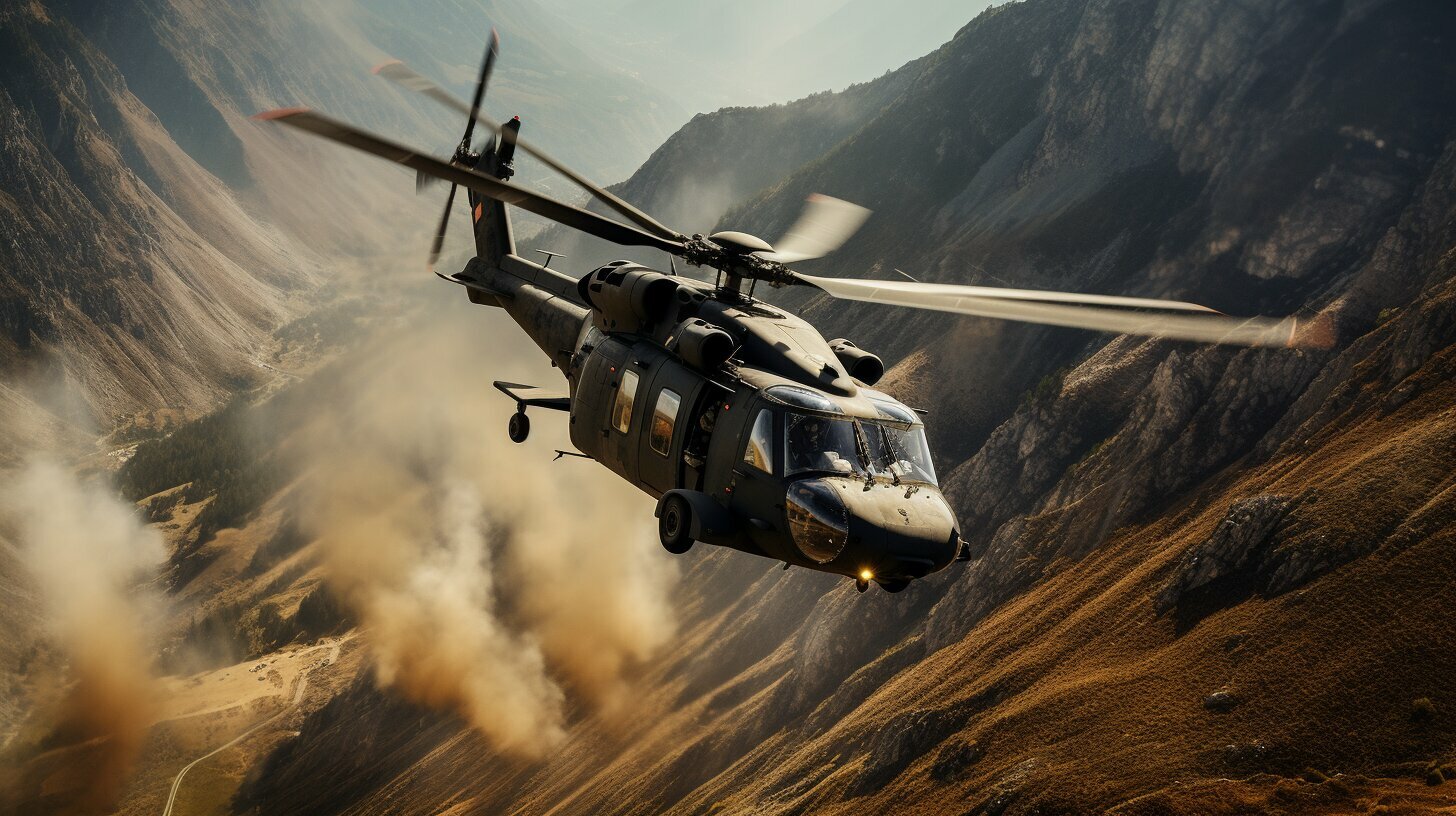
The Use Of Helicopters For Disaster Relief
Helicopters play a vital role in providing disaster relief during natural disasters and humanitarian crises. Their unique capabilities allow them to reach isolated areas, deliver urgently needed aid, conduct search and rescue operations, transport personnel and supplies, and survey damage quickly and efficiently. This article will examine the many ways helicopters are utilized for disaster relief efforts worldwide.
Capabilities That Make Helicopters Ideal For Disaster Relief
There are several key attributes that make helicopters well-suited for disaster relief operations:
- Vertical takeoff and landing – Helicopters do not require a runway to takeoff or land. This allows them to operate in remote areas or places impacted by a disaster that have little to no infrastructure. Helicopters can take off and land in tight spaces.
- Hovering capability – The ability to hover in place gives helicopters the flexibility to conduct focused operations in a small area over an extended period of time such as searching for survivors or delivering supplies.
- Speed – Helicopters are relatively fast compared to other modes of transport like boats, trucks, or aircraft that require runways. This allows them to get personnel, equipment, and aid to where it is needed rapidly.
- Maneuverability – Helicopters are highly maneuverable in the sky with the ability to fly forward, backward, and laterally. They can access hard-to-reach locations from different angles and bypass obstacles.
- Range – Modern helicopters can fly for several hours without refueling and cover considerable distances. This range allows them to operate over a wide region hit by a disaster.
- Carrying capacity – Depending on size and model, helicopters can transport a substantial amount of supplies, provisions, or people in a single trip. This enables the large-scale movement of goods and personnel.
- Durability – Helicopter engines and rotors are designed to handle debris, turbulence, and unfavorable weather often encountered when flying relief missions in disaster zones.
Conducting Search and Rescue Operations
One of the most vital uses of helicopters in disaster response is for search and rescue operations. Helicopters have unparalleled capabilities to locate disaster victims trapped or stranded in remote or inaccessible areas and airlift them to safety.
- Aerial vantage point allows crews to scan large areas and spot people in need of help. Helicopters can reach mountainsides, dense forests, offshore locations, flooded zones, and more.
- Heat-sensing technologies like forward-looking infrared (FLIR) cameras can detect body heat signatures pinpointing the location of survivors.
- Hoist rescue equipment that lowers stretchers, harnesses, or baskets enables crews to extract injured victims with minimum space needed for landing.
- Helicopter crews undergo specialized training for safe extraction of people from distressed areas, providing emergency first-aid and swift transport to hospitals.
- The ability to hover close to the ground provides access, even in collapsed structures or surrounded by debris.
- Helicopters can access offshore locations like boats, platforms, or rooftops isolated by flood waters to rescue victims.
During the response to Hurricane Katrina in 2005, over 50,000 people were rescued using helicopters when severe flooding left many stranded. Military and civilian agencies coordinated this massive search and rescue effort using a fleet of helicopters.
Transporting Supplies and Personnel
Helicopters provide an efficient means to transport large volumes of relief supplies, provisions, medical equipment, and personnel in the aftermath of natural disasters:
- Cargo helicopters like the CH-47 Chinook or Mi-26 can lift up to 20,000 pounds of supplies in a single trip. This massive carrying capacity allows the movement of substantial aid material rapidly.
- Equipped with cargo hooks and slings, helicopters can transport underslung loads like vehicles, generators, water treatment units to disaster sites that lack roads or infrastructure.
- Swift mobilization of search and rescue teams, medical professionals, aid workers, engineers, volunteers to remote areas to establish relief camps and begin operations.
- Transport of relief equipment like water purification units, tents, mobile hospitals to provide shelter, medical aid, food, and sanitation at emergency sites.
- Quick distribution of food, water, medicines, and essential provisions to displaced disaster victims waiting in shelters. Reaching isolated communities before road access is restored.
- Conduct air ambulance missions to move injured victims requiring urgent medical care to functioning hospitals in other locations.
The mobility offered by helicopters greatly accelerates the logistics of getting critical resources where they are desperately needed when normal transportation routes are disrupted post-disaster.
Surveying Damage
Helicopters are invaluable for rapidly conducting aerial assessments of the damage and determine the scale of the crisis:
- Helicopters can fly over disaster zones immediately after events like earthquakes, cyclones, tsunamis, volcanic eruptions to quickly evaluate the extent of destruction and impacts.
- Infrared and photographic equipment mounted on helicopters can take detailed images of the damage to create useful data maps highlighting worst-hit areas and disaster impacts on roads, buildings, infrastructure, and topography.
- Helicopters allow disaster managers to inspect affected regions faster and plan the response after quickly identifying the magnitude of damage, estimated population impacted, accessibility issues, and requirements for relief operations.
- Equipped with loudspeakers, helicopters can broadcast messages to people in disaster zones informing them of ongoing relief efforts and places of shelter.
- Helicopters provide a broader overview of emerging threats like breached levees, landslides, collapsed bridges, and blocked relief routes. This allows corrective actions to be taken urgently.
The vantage point and abilities of helicopters greatly assist disaster managers in coordination and optimizing operations based on accurate data of on-ground conditions collected via aerial surveys.
Coordination and Communication
Helicopters serve as an important base for coordination between relief teams and communication in disaster-hit areas:
- Aerial vantage enables better coordination between multiple relief units, vehicles, and personnel on the ground from the air.
- Relay emergency communications from remote areas to central command centers where access is lost. Helicopters can bridge communications gaps after disasters.
- Transport senior officials and disaster management personnel by air to different sites for assessing needs, progress, and provide guidance to response teams.
- Broadcasting radio messages to the public providing updates about disaster response and government relief initiatives through helicopters fitted with speakers.
- Helicopters equipped for disaster response typically include robust communications devices, radio controls, satellite systems, and navigation tools enabling seamless coordination between air and ground crews.
The unique position helicopters have overlooking affected zones facilitates integrated disaster management by linking personnel, teams, and work sites spread across a vast region.
Challenges Of Using Helicopters
While helicopters provide immense benefits, there are some limitations and challenges to consider:
- Safety risks – Crews undertake complex maneuvers, often over remote terrain or close to damaged structures, requiring robust training and precautions. Adverse weather like dense fog or smoke can hamper visibility.
- High costs – Helicopter purchase, maintenance, fuel, and training involve substantial expenses. Mobilizing a large fleet specially equipped for disaster response requires significant funding.
- Limited capacity – Based on helicopter size and model, cargo capacities may still be inadequate for massive relief operations. Many trips may be needed to meet requirements.
- Regulatory restrictions – Every nation has regulations governing airspace access, night flights, landing permissions that must be considered for coordinating helicopter operations. Securing prompt approvals can be challenging.
- Logistical needs – Helicopters need trained crews, support staff, spare parts, fuel supplies, and landing/parking areas. Arranging logistics under emergency conditions can be difficult.
Disaster response planners take these limitations into account and make provisions to use helicopters safely, efficiently, and within regulatory frameworks when organizing relief efforts.
Conclusion
Helicopters are an indispensable component of emergency response capabilities worldwide. Their unique attributes allow them to reach remotes areas quickly, undertake vital surveillance, enable search and rescue, transport large volumes of aid, and establish coordination channels after disasters. Helicopters greatly enhance the effectiveness and speed of life-saving humanitarian relief when every minute counts. Continued investments in disaster-ready fleets and trained crews are essential to leverage the full potential of helicopters for managing emergencies. With global climate change anticipated to increase extreme weather events and disasters, the role of helicopters in risk mitigation and emergency response will only grow in importance in the future.
Frequently Asked Questions
How are helicopters coordinated during major disaster relief efforts?
Disaster managers establish centralized aviation command centers to coordinate helicopter deployment. Requests are processed, priorities assigned, airspace allocated, and fleets tracked from these centers in collaboration with air traffic control. Crews are briefed on missions, provided ground and weather information, and disaster maps. Radio and satellite communication enables real-time coordination.
What equipment do disaster relief helicopters need?
Helicopters require cargo hooks, slings, and winches to carry or suspend heavy loads. Stretchers, blankets, medical kits prepare them for medical evacuations. Robust navigation tools, floodlights, cameras, and communications systems enable them to operate in disaster zones efficiently.
What types of helicopters are used in disaster response?
Light single-engine helicopters conduct surveillance, transport personnel, and communications roles. Heavy twin-engine helicopters like Sikorsky UH-60 Black Hawk conduct rescue, cargo transport, and re-fueling operations. Large CH-53 Sea Stallions support logistics including vehicle movement.
How can helicopters assist in floods and cyclones?
Helicopters can rescue people trapped by rising flood waters. Equipped with loudhailers, they can guide marooned people to safety. They airdrop essential food and water supplies when ground transport is disrupted. Helicopters transport engineering teams to repair breached levees and embankments.







